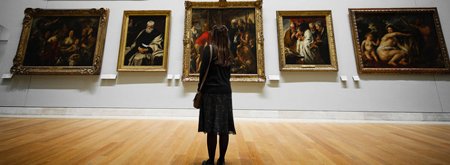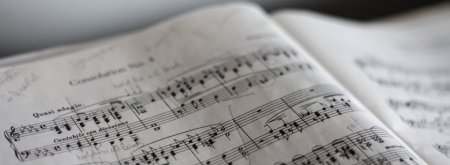C.S. Lewis's Approach to Art and Literature
Please note that the content of this talk partially overlaps that of Jerry Root’s other talk entitled 'C.S. Lewis’s Approach to Apologetics'. This talk specifically discusses Lewis’s arguments presented in his book The Abolition of Man.
This seminar begins with an exploration of the ideas set forth in Lewis’s work on philosophy of education, The Abolition of Man, where Lewis asserts there is an objective universe which is inexorable. He suggests that it is incumbent upon men and women to adjust their thinking and their emotional selves to this objective reality. Seldom do we understand our world exactly as it is, so we do well to benefit from the perspectives of others in dialectically safe community. This objective world, and the wide range of ways to express what can be known about that world, guides Lewis in making aesthetic judgements, as well as literary critical judgements. This seminar is offered in the hopes that Lewis’s insight might encourage lively discussion which hints at a Christian approach to the arts.
I. Introduction
II. Lewis’s argument in The Abolition of Man
A. 'Men Without Chests'
1. Coleridge at the waterfall.
2. Reality is not truth; truth is what I think about reality when I think accurately about it.
3. The Tao is ‘the doctrine of objective value’.
a. What this is not: the denial of the subjective.
b. What this is: the coherence between subjective assessment and objective reality.
c. Note Lewis’s The Poison of Subjectivism.
4. Sentiments can also be in harmony with reason.
a. Traherne ‘Can we be just if we do not render to things their due esteem?’
b. Augustine’s ordo amoris.
B. The Way – Substitutes for the Tao – Innovators of Value
1. Utilitarianism.
2. Instinct.
3. Economic value.
4. The Tao admits development within.
C. The Abolition of Man
1. Man’s final conquest over nature proves to be nature’s conquest over man.
2. ‘Either we are rational spirit obliged for ever to obey the absolute values of the Tao, or else mere nature to be kneaded and cut into shapes for the pleasures of masters who must, by hypothesis, have no motive but their own ‘natural’ impulses. Only the Tao provides a common human law of action which can overarch rulers and ruled alike. A dogmatic belief in objective value is necessary to the very idea of a rule which is not tyranny or an obedience which is not slavery.’ Lewis.
D. Appendix: Illustrations of the Tao
III. Assessment of Lewis’s argument in The Abolition of Man
Cf. Richard Weaver’s The Ethics of Rhetoric
A. The argument from definition
B. The argument from similitude
C. The argument from consequence or cause and effect
D. The appeal to authority
IV. Applications of Lewis’s Argument in The Abolition of Man
A. As applied to art; cf. Thomas Aquinas’ Summa Theologica
1. Admirable beauty is intrinsic to objects.
2. Enjoyable beauty reflects one’s capacity to appreciate what is intrinsic to the object.
B. As applied to morality cf. Aristotle’s Nichomachean Ethics
1. The end of life is to achieve the happy life.
2. The happy life is achieved when all one’s basic needs are met.
3. The necessity of character, or virtue, as a means to the good ends.
a. Courage – The habitual ability to suffer pain and hardship; it is endurance, fortitude and staying power.
b. Temperance – The habitual ability to resist the enticement of immediate pleasure in order to gain the greater more remote good.
c. Justice – The habit of being law abiding and concerned for the general welfare of one’s society:
i. Secures and protects natural rights.
ii. Is fair.
iii. Renders to others their due.
d. Wisdom – The habit of being careful about the decisions one makes, it seeks counsel and advice.
V. Conclusion
© 2006 Jerry Root



